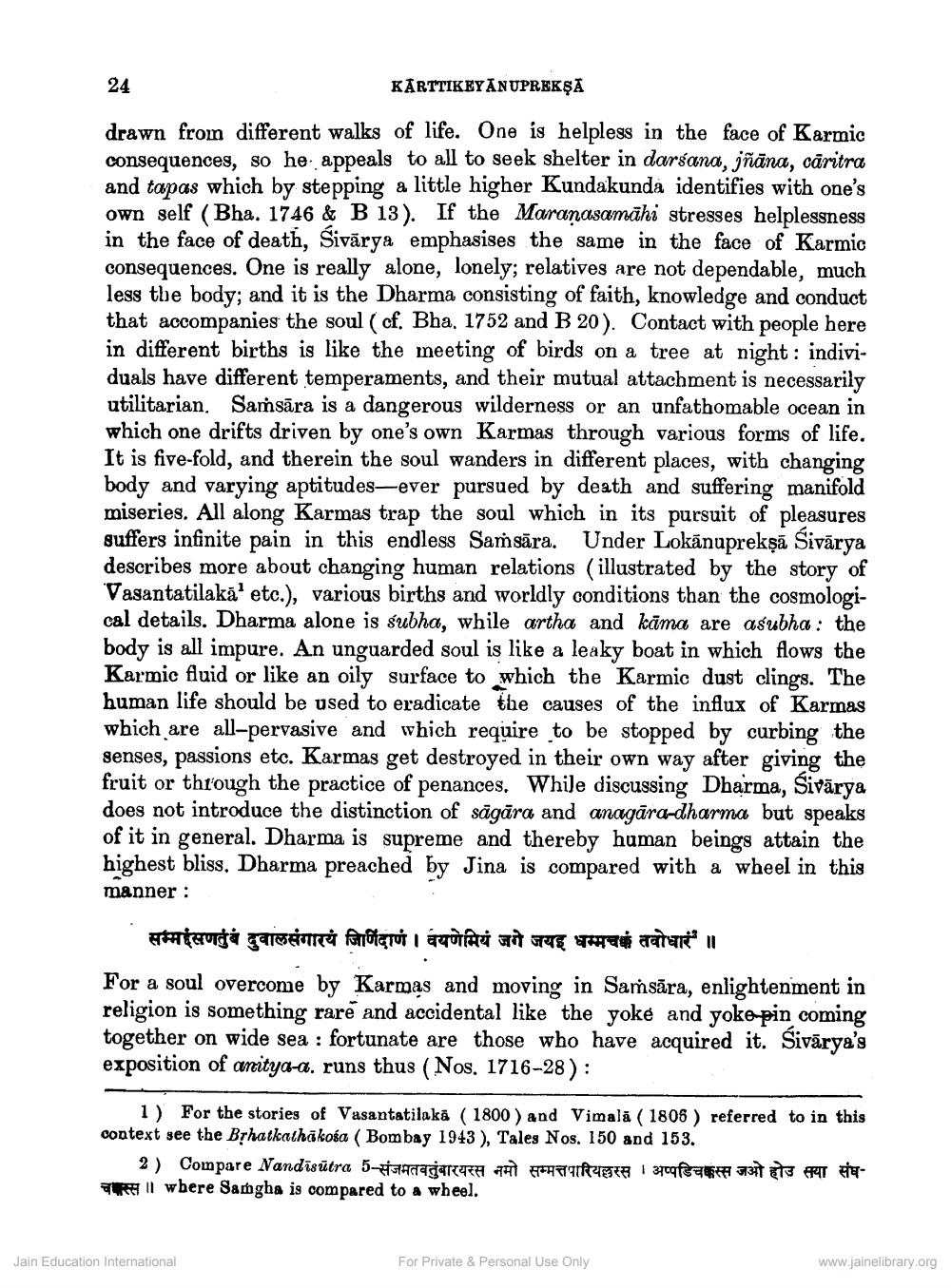________________
24
KĀRTTIKEYĀNUPREKŞA
drawn from different walks of life. One is helpless in the face of Karmic consequences, so he appeals to all to seek shelter in darśana, jñāna, caritra and tapas which by stepping a little higher Kundakunda identifies with one's own self (Bha. 1746 & B 13). If the Maranasamähi stresses helplessness in the face of death, Sivārya emphasises the same in the face of Karmic consequences. One is really alone, lonely; relatives are not dependable, much less the body; and it is the Dharma consisting of faith, knowledge and conduct that accompanies the soul (cf. Bha, 1752 and B 20). Contact with people here in different births is like the meeting of birds on a tree at night : individuals have different temperaments, and their mutual attachment is necessarily utilitarian. Samsāra is a dangerous wilderness or an unfathomable ocean in which one drifts driven by one's own Karmas through various forms of life. It is five-fold, and therein the soul wanders in different places, with changing body and varying aptitudes—ever pursued by death and suffering manifold miseries. All along Karmas trap the soul which in its pursuit of pleasures suffers infinite pain in this endless Samsāra. Under Lokānuprekşā Śivārya describes more about changing human relations (illustrated by the story of Vasantatilakā? etc.), various births and worldly conditions than the cosmological details. Dharma alone is subha, while artha and kāma are asubha : the body is all impure. An unguarded soul is like a leaky boat in which flows the Karmic fluid or like an oily surface to which the Karmic dust clings. The human life should be used to eradicate the causes of the influx of Karmas which are all-pervasive and which require to be stopped by curbing the senses, passions etc. Karmas get destroyed in their own way after giving the fruit or through the practice of penances. While discussing Dharma, Sivārya does not introduce the distinction of sāgāra and anagāra-dharma but speaks of it in general. Dharma is supreme and thereby human beings attain the highest bliss. Dharma preached by Jina is compared with a wheel in this manner :
सम्मईसणतुंबं दुवालसंगारयं जिणिदाणं । वयणेमियं जगे जयइ धम्मचकं तवोधारं ॥ For a soul overcome by Karmas and moving in Saṁsāra, enlightenment in religion is something rare and accidental like the yoke and yoke pin coming together on wide sea : fortunate are those who have acquired it. Sivārya's exposition of anitya-a. runs thus (Nos. 1716-28) :
1) For the stories of Vasantatilakā (1800) and Vimalā (1806 ) referred to in this context see the Bșhatkathākośa (Bombay 1943), Tales Nos. 150 and 153.
2) Compare Nandīsūtra 5-aaganch FHT F URTERA 13ft 33 Iwbere Samgha is compared to a wheel.
Jain Education International
For Private & Personal Use Only
www.jainelibrary.org




